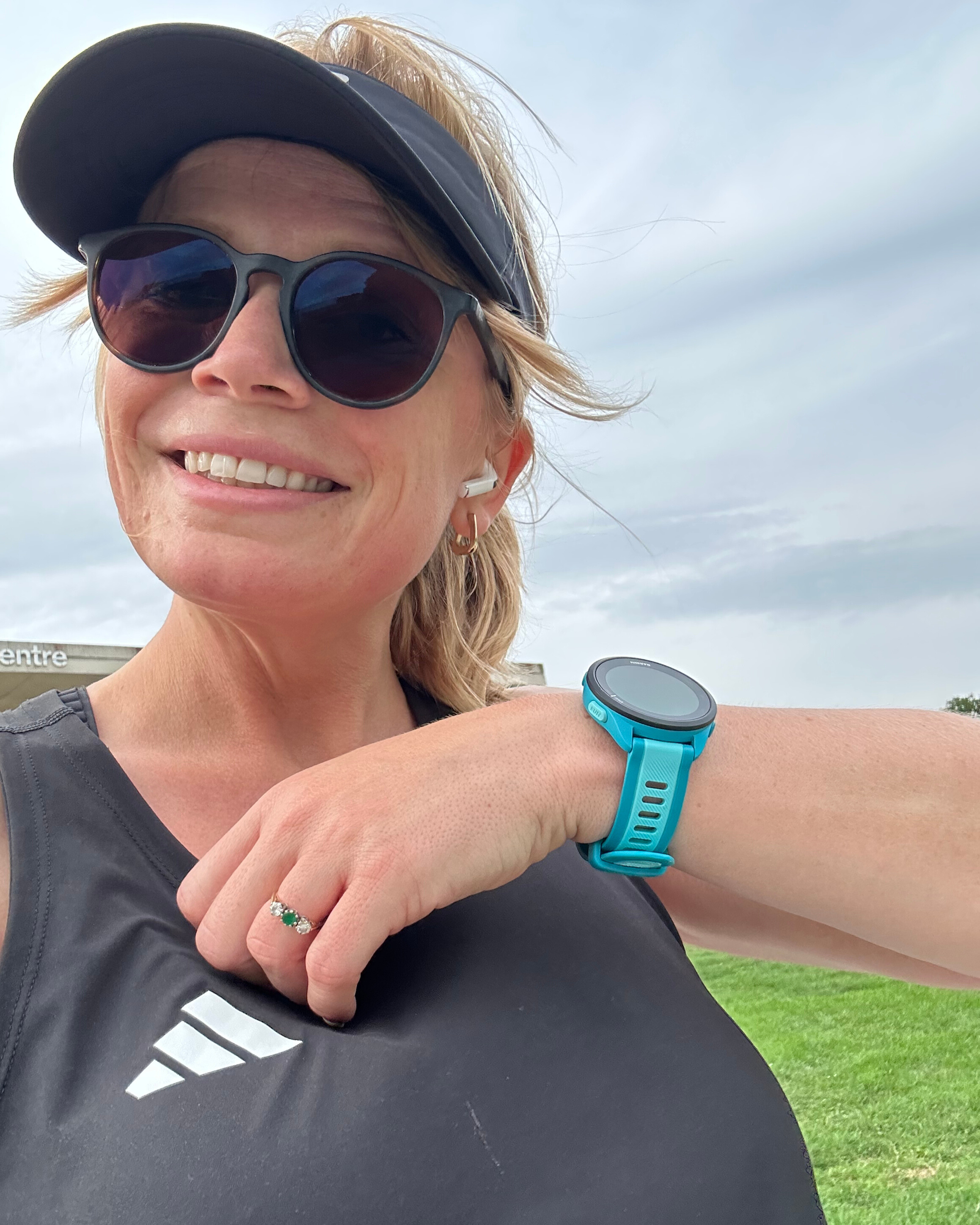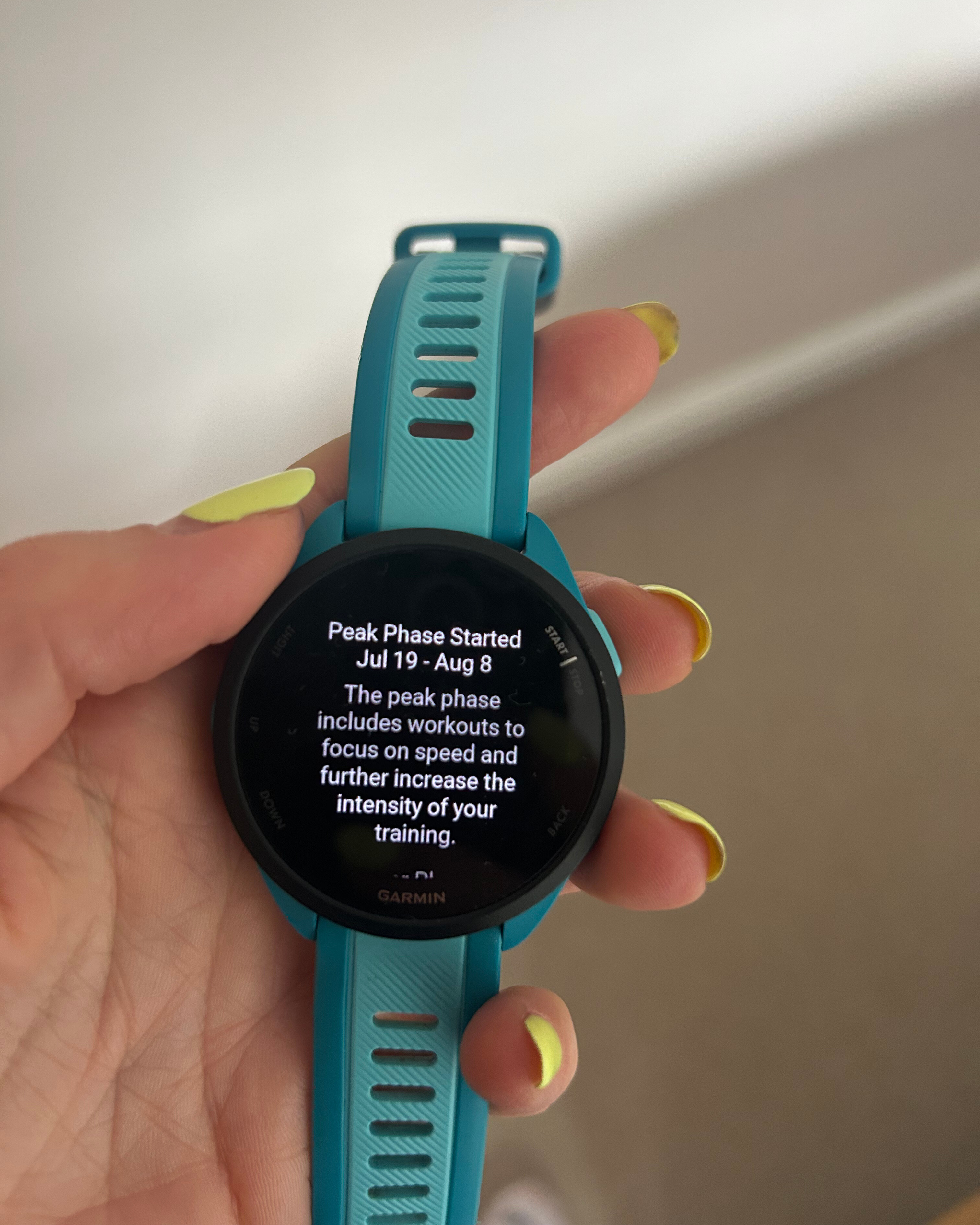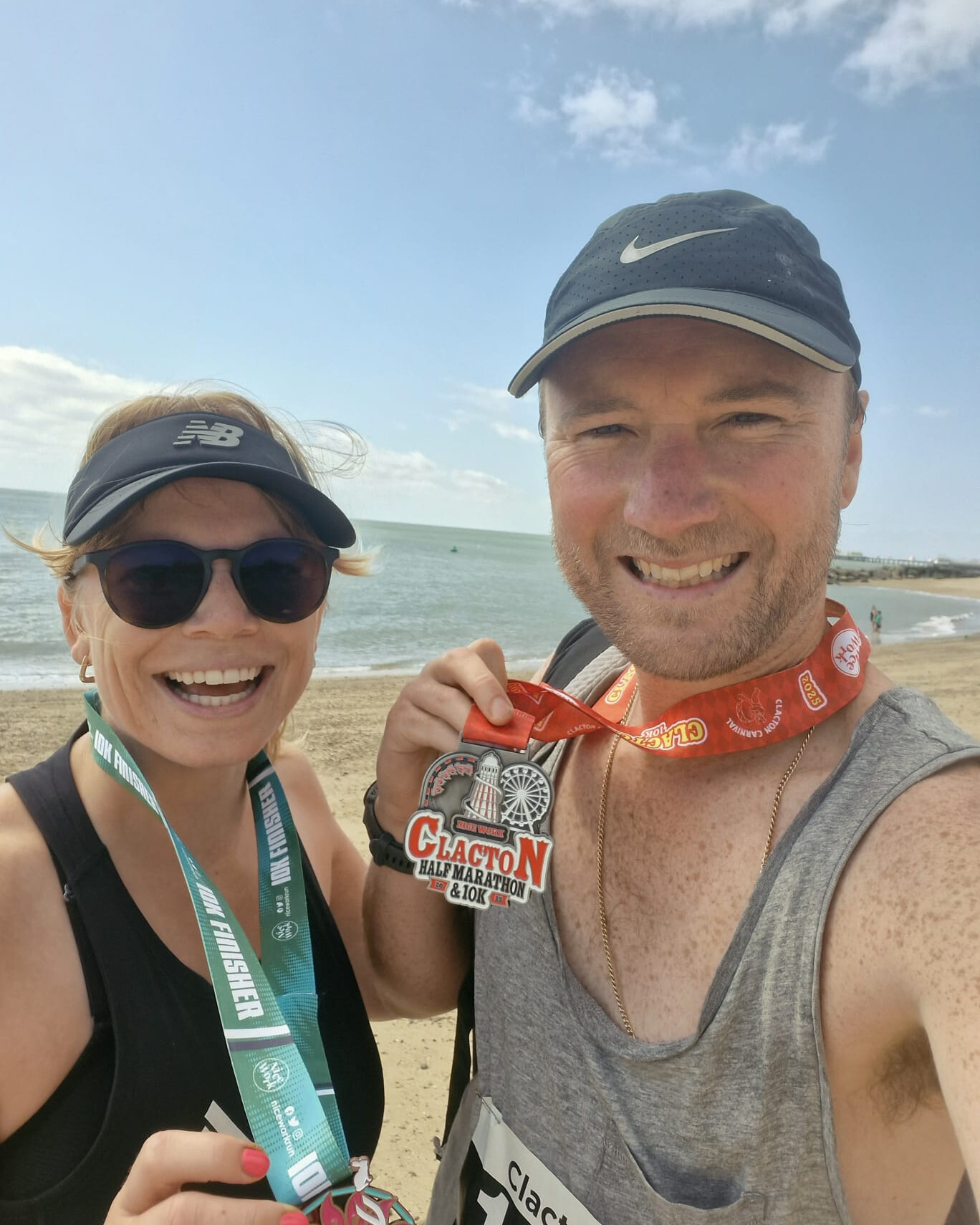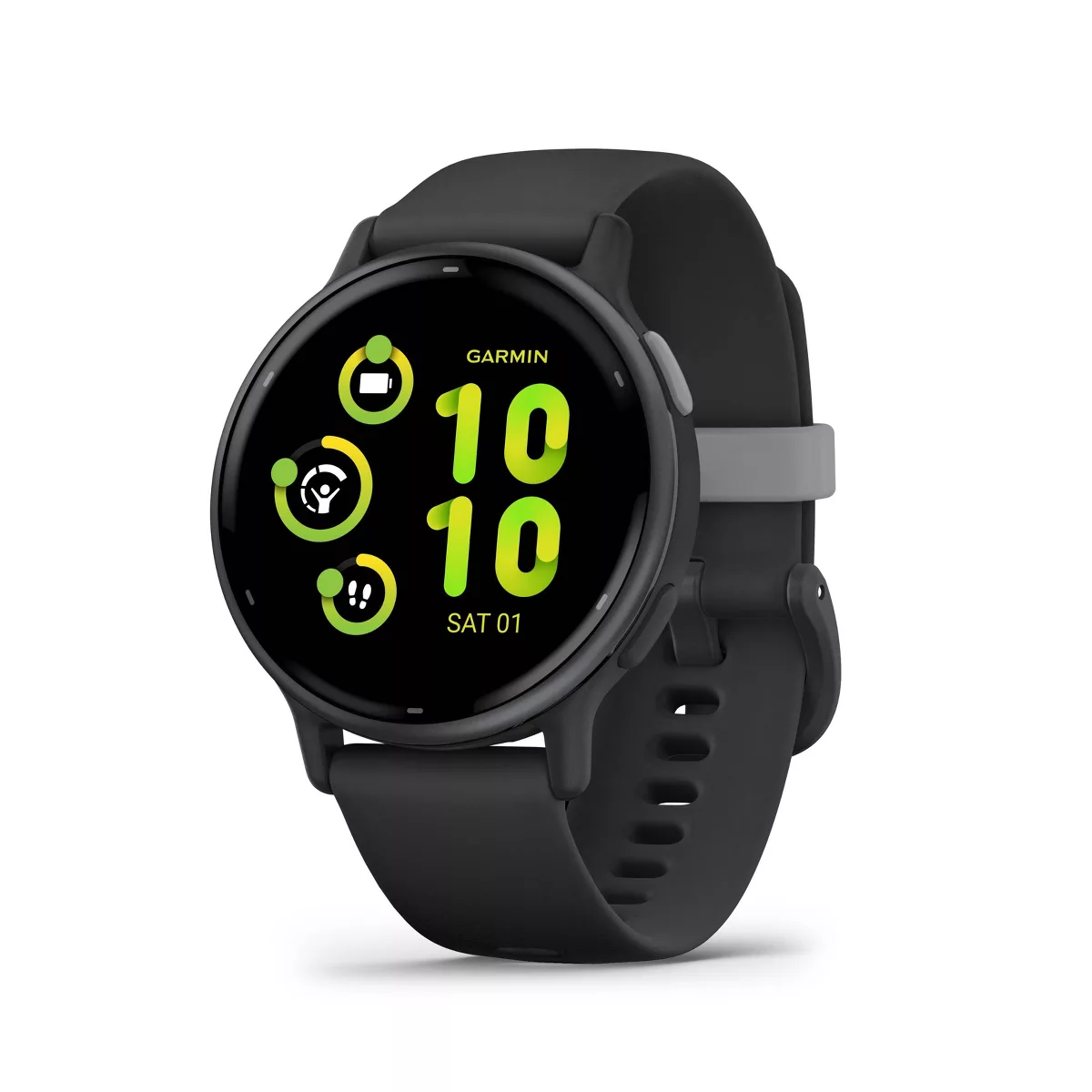I used Garmin’s Run Coach to help me train for my first 10K—here are my honest thoughts
Here’s how I went from running 5K to 10K in just seven weeks


In March this year I completed the final run of my Couch to 5K plan. While I’d previously run two half marathons a decade ago, my cardio workouts (let’s be honest, any type of workout) had dwindled in the wake of bringing up a rambunctious five-year-old.
Determined to reclaim some sort of fitness, I’d downloaded the Couch to 5K app in January, and grunting and sweating my way through it, I worked my way up to running a 5K. Success!
But what next? I wanted to continue my running and to push myself further. Having followed a regimented programme for nine weeks that got me running three times a week through the winter, I was keen to follow another plan to keep me committed, but to my knowledge, there wasn’t a dedicated app to help me increase my distance from running 5K to 10K.
The editor at Fit&Well suggested I try the Garmin Run Coach that comes with Garmin’s running watches. He’d used it and one of his colleagues had used something similar on another brand of running watch to run a 5K under 30 minutes.
So I agreed to try the Garmin Forerunner 165 and Garmin Run Coach.
Here’s how I got on.
The watch was easy to use
The Garmin Forerunner 165 was a great introduction to wearables with its large touch screen interface and intuitive functions.
Start your week with achievable workout ideas, health tips and wellbeing advice in your inbox.
I simply downloaded the Garmin Connect app, configured the watch, and used the Garmin Coach Plans section of the app to set up a plan that would help me train towards a 10K.
I found it pretty straightforward. While I’d call myself tech-savvy, especially having started my career at Apple, I hadn’t previously used a wearable to track my running, but the setup was easy and quick.
There are plenty of plans to choose from, and you have the option of training for an event, achieving a milestone such as a certain distance or speed, or improving your general fitness without a set goal.

It’s easy to get overexcited when setting up the plan
I opted to train for an event—the Clacton 10K—which was seven weeks away. To set up the plan, I had to input my average weekly distance, average pace, the distance I was training for and the goal (e.g., to finish, or to finish with a certain time goal).
While there are set running plans from Garmin coaches to choose from, I stuck with the Garmin Run Coach, which offers the most personalised plan and adjusts your workouts based on the health and performance metrics gathered by your Garmin.
I then just needed to input how many days I was looking to train and which days my long runs would be. Rather ambitiously, given my work and child-rearing responsibilities, I opted for five training sessions a week.
I soon discovered balancing work, childcare and five runs a week was going to be tricky, but I made sure I turned up three days a week, and tackled a mix of the runs on the plan. Speaking of which.
I was introduced to running at different paces
Every week my plan required me to complete “base”, “tempo” and “threshold” runs. This terminology was new to me—until now, my approach to running had been to run until I couldn’t run anymore.
As explained on the Garmin app, a base run is a low-intensity, long-duration workout designed to build aerobic capacity and endurance. These were my preferred runs out of the three styles due to the slower pace.
Meanwhile, tempo runs fall under the category of high-intensity aerobic training runs with a set pace you need to adhere to, and are a great way of building fitness.
Threshold runs aim for you to run slightly above your lactate threshold—the highest intensity you can sustain before high levels of blood lactate hinder your performance. These really tested me and I found it tricky to meet the suggested pace at all.
It was hard!
I won’t lie—the initial runs really pushed me and felt like a departure from the Couch to 5K plan, which focused on the duration of the run, rather than the speed or distance. With the Garmin Run Coach plan, I had to run for a set amount of time, but also at a set pace. I had to quickly get used to my Garmin beeping at me if I fell out of the suggested pace range (which I often did!).
That said, I quite quickly began to make some gains, with my pace and endurance steadily increasing, even if it felt like I was failing a lot as my pace consistently fell out of range. The plan was designed to push me past my comfort zone and I was up for the challenge.

I got faster and felt ready to run 10K
While the runs still pushed me as the plan began to taper, I did achieve my fastest pace at the beginning of week five (10min 11sec/mile during a threshold run), before finishing with two runs on week seven. I did still struggle to maintain the pace that was suggested for me (short sprints of 8min 46sec/mile during a tempo run), but I decided to run at a pace that was comfortable for me.
During my training, the longest I ran for was 45 minutes. While I did not cover the entire 10K in one go, I was confident that being able to comfortably run for 45 minutes would put me in a good place for the race.
And I ran 10K without stopping!
Training complete, I felt confident heading into my 10K. It was a warm, blue-sky morning in August, and the route was a flat loop along the Clacton coast with just two small inclines.
It was clear I would have to adjust my pace to a slower tempo than that set for me in my training runs, especially if I was to keep my breath and not overdo it.
I ran with a friend and we maintained a steady 14min 2sec/mile, which meant I was able to hold a conversation and I didn’t need to stop at any point during the race. I finished the race with a time of 1hr 26min 46sec. Unexpectedly, I still had energy in the tank after crossing the finish line and felt like I could have run a few more kilometres.

My verdict
I started the year not thinking I could run 5K, let alone 10K. While the Garmin Run Coach plan did undoubtedly push me, and at times I really struggled to maintain the suggested pace, it certainly paid dividends when it came to the race and my overall fitness levels.
I would definitely follow a Garmin Run Coach plan again, although I would love to try one that focuses more on building distance rather than pace, particularly as I’ve now got my sights set on a half marathon (and beyond!).
Shop Garmin running watches
The Garmin Run Coach feature is available on a wide range of Garmin devices, many of which will be discounted in the coming weeks for Black Friday. Here are Fit&Well’s top three picks of the current discounts available—all of which feature the Run Coach feature.

Kayleigh Rattle is a journalist, editor and copywriter specialising in food, travel, parenting and wellbeing. As a freelance journalist, Kayleigh writes for the likes of The Independent, The London Standard, National Geographic, Good Food, Health & Wellbeing and others. In her spare time, Kayleigh loves paddleboarding, runs by the river, and exploring the world with her partner and son through a foodie lens.
You must confirm your public display name before commenting
Please logout and then login again, you will then be prompted to enter your display name.


